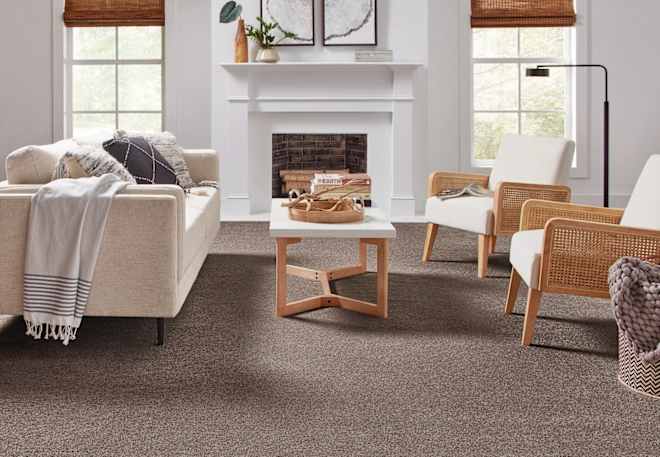Choosing the Right Living Aids for Seniors: A Complete Buying Guide

As we age, our bodies undergo various changes that may affect our ability to perform everyday tasks. For seniors, these challenges can sometimes lead to a loss of independence, a decrease in mobility, or an increased risk of injury. However, modern technology and products have made it easier than ever for seniors to maintain their quality of life, independence, and safety. Living aids for seniors are tools designed to support their physical, emotional, and mental well-being, helping them navigate their day-to-day activities with ease.
In this comprehensive buying guide, we will explore the different types of living aids for seniors available, how to choose the right one for your needs, and what factors to consider when purchasing them.
What Are Living Aids for Seniors?
Living aids for seniors refer to products and devices that assist with daily living activities, ranging from mobility aids and home safety equipment to tools that support self-care, communication, and household tasks. These aids can enhance a senior's ability to remain independent, reduce the risk of falls, and increase overall comfort in their living environment.
Some common examples of living aids include:
-
Mobility aids: Walkers, canes, wheelchairs, and scooters.
-
Bathroom safety aids: Grab bars, shower chairs, non-slip mats, and raised toilet seats.
-
Personal care tools: Dressing aids, bath sponges, and button hooks.
-
Household aids: Reachers, jar openers, and ergonomically designed utensils.
-
Health monitoring tools: Blood pressure monitors, hearing aids, and glucose meters.
-
Communication devices: Amplified phones and emergency alert systems.
These aids are not one-size-fits-all solutions, so it’s important to choose the right products based on the specific needs and abilities of the senior in question.
How to Choose the Right Living Aid
Selecting the right living aid for a senior depends on a variety of factors, including their health condition, level of mobility, and the environment in which they live. Below are key considerations to help guide your decision-making process.
1. Assess the Senior's Needs
Before choosing any living aid, it’s essential to understand the senior’s specific needs. Are they struggling with mobility, balance, vision, or hearing? Do they require assistance with personal care, or are they simply looking for ways to make everyday tasks easier? Assessing their health and daily routines will help identify the right tools.
For example:
-
If the senior has trouble with mobility, a walker, cane, or wheelchair might be necessary.
-
If they have vision problems, larger-print books, magnifiers, or talking clocks could be helpful.
-
If they have arthritis or limited hand strength, ergonomically designed utensils, jar openers, and automatic can openers would make a big difference.
2. Consider the Home Environment
Where the senior lives is another crucial factor in choosing living aids. A senior living in a house may have different needs than someone in an apartment or assisted living facility. Consider the layout of their living space, potential hazards, and the size of their home.
-
For bathrooms: Look for grab bars, non-slip mats, and raised toilet seats to make bathrooms safer. If the senior struggles with getting in and out of the shower or bathtub, a shower chair or bathtub transfer bench can provide added stability.
-
For mobility in the home: Walkers, canes, or wheelchairs are ideal for seniors with limited mobility, but the type of aid should be based on the space. A large house with wide hallways might work better for a walker, while a smaller home might require a compact cane or a power scooter.
-
For stairs: If stairs are a concern, consider stairlifts, which can help seniors safely move between floors without risk.
3. Health Conditions and Limitations
Many seniors have specific health conditions that influence their choice of living aids. Conditions such as arthritis, dementia, stroke recovery, Parkinson's disease, or osteoporosis can affect a senior's ability to perform certain tasks. Therefore, it’s important to choose products that accommodate these conditions.
-
Arthritis: Seniors with arthritis often struggle with gripping objects or bending their joints. Tools with larger handles, cushioned grips, or automatic functions are ideal. Dressing aids like button hooks or zipper pulls can also help seniors dress independently.
-
Parkinson’s Disease: Tremors associated with Parkinson's disease can make it difficult to perform tasks that require fine motor skills, such as eating or writing. Weighted utensils, non-slip mats, and voice-activated devices may make daily tasks easier.
-
Dementia and Cognitive Decline: Seniors with dementia or Alzheimer's may benefit from memory aids, medication reminders, or easy-to-use communication devices. Devices like talking clocks, large-button phones, and personal alert systems can provide peace of mind and promote safety.
4. Ease of Use and Convenience
The most effective living aids are those that are easy to use and incorporate into the senior’s daily routine. Look for products that require minimal effort to operate or adjust. Seniors should feel confident using the aids without feeling overwhelmed or frustrated.
-
Weight: A living aid that is too heavy or cumbersome will likely be ineffective. Choose aids that are lightweight and manageable for the senior to use regularly.
-
Adjustability: Aids that can be adjusted to fit the senior’s body size or preferences, such as adjustable walkers or chairs, offer flexibility and comfort.
-
Maintenance: Consider how easy it is to clean and maintain the product. Items like shower chairs and non-slip mats should be easy to wash, while mobility aids should have durable, long-lasting parts.
5. Budget
Living aids can range in price from affordable to expensive, so setting a budget is important before making a purchase. While high-end models may offer more advanced features, many basic products can provide substantial benefits without breaking the bank.
-
Insurance Coverage: Some living aids, especially those prescribed by a doctor, may be covered by insurance or Medicare. It’s worth checking to see what assistance might be available.
-
Longevity and Quality: Higher-quality products may come with a higher initial cost but could save money in the long run due to their durability and reliability. Don’t sacrifice quality for a lower price if the aid is something the senior will use daily.
6. Consult a Professional
If you’re unsure which living aids are best suited for the senior in your life, consider consulting with a healthcare professional. A doctor, occupational therapist, or physical therapist can provide personalized recommendations based on the senior’s health needs and limitations. They may also offer suggestions for additional resources, such as local support services or organizations.
Popular Living Aids for Seniors
Here’s a closer look at some popular living aids that can help improve daily living for seniors:
1. Mobility Aids
-
Canes and Walking Sticks: Ideal for seniors who need a little extra support while walking but don’t require a walker or wheelchair.
-
Walkers: Offer more stability than canes and are suitable for those with balance or mobility issues.
-
Wheelchairs: For seniors with severe mobility limitations, a wheelchair (manual or powered) can provide increased independence.
-
Scooters: Powered scooters are perfect for seniors who have limited mobility but still want to get around outdoors or cover longer distances.
2. Bathroom Aids
-
Grab Bars: Installed in showers, near toilets, or by bathtubs, grab bars help prevent falls and provide stability when standing or sitting.
-
Shower Chairs: Help seniors with limited mobility sit safely while bathing.
-
Raised Toilet Seats: Make it easier for seniors to sit and stand from the toilet, reducing strain on the knees and hips.
3. Kitchen Aids
-
Jar Openers: Help seniors with limited grip strength open jars and bottles easily.
-
Ergonomic Utensils: Designed for easier handling, these utensils are perfect for seniors with arthritis or limited hand strength.
-
Automatic Can Openers: A great option for seniors who struggle with the manual labor involved in opening cans.
4. Communication Devices
-
Amplified Phones: For seniors with hearing loss, amplified phones provide louder sound, making it easier to stay in touch with family and friends.
-
Emergency Alert Systems: These wearable devices allow seniors to call for help if they fall or have an emergency, providing peace of mind for both the senior and their loved ones.
5. Personal Care Aids
-
Dressing Aids: Button hooks, zipper pulls, and shoehorns help seniors with dressing by reducing the need for fine motor skills.
-
Bathing Aids: Long-handled sponges and bath seats assist seniors with bathing while reducing the risk of falling.
Conclusion
Choosing the right living aids for seniors is a process that involves careful consideration of the individual’s needs, health conditions, and living environment. By understanding these factors and exploring the variety of available aids, you can ensure that seniors in your life can maintain their independence, safety, and quality of life. Whether it's a simple cane or a high-tech communication device, the right living aids can make a world of difference.




















_Dzmitry_Skazau_Alamy.jpg?width=1280&auto=webp&quality=80&disable=upscale#)




















![American Airlines Offering 5,000-Mile Main Cabin Awards—Because Coach Seats Aren’t Selling [Roundup]](https://viewfromthewing.com/wp-content/uploads/2017/11/20171129_062837.jpg?#)









![Charming Curse [THE CURSE OF THE JADE SCORPION]](https://jonathanrosenbaum.net/wp-content/uploads/2011/04/the_curse_of_the_jade_scorpion-poster.jpg)























